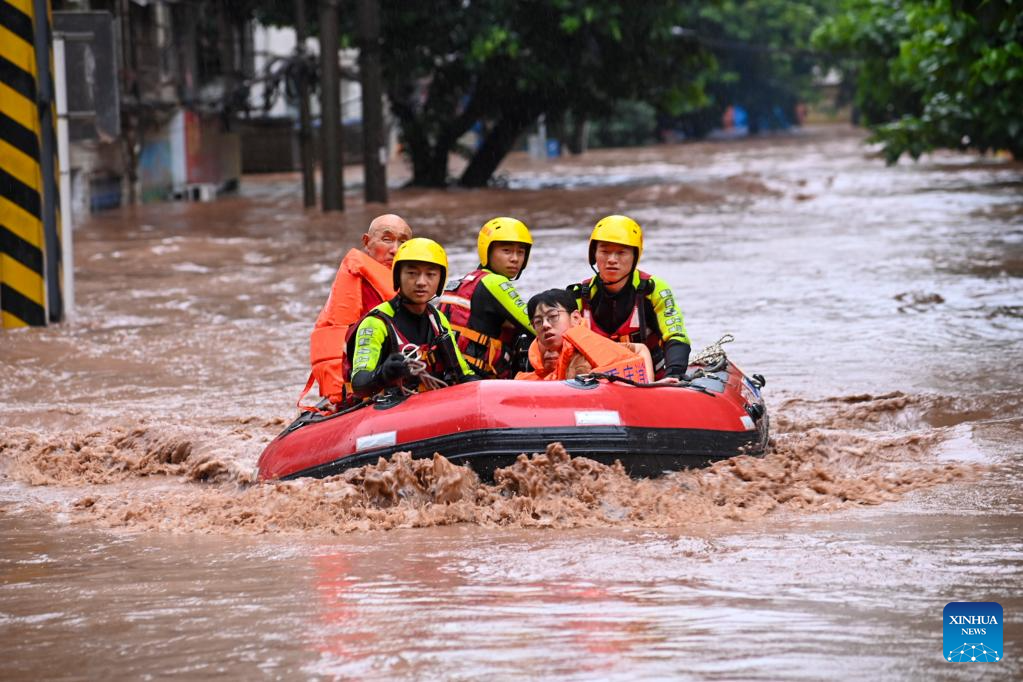
Rescue people trapped in flood in Chongqing, China, July 4, 2023.
"El Nino will significantly increase the likelihood of breaking temperature records, causing more extreme temperatures in many areas," said Secretary General of the World Meteorological Organization (WMO) Petteri Taalas. places in the world and in the ocean. Governments around the world need to prepare measures to limit El Niño's impact on our health, ecosystems and economies."
El Nino is a natural climate pattern in the tropical Pacific that causes sea surface temperatures to be warmer than average, greatly affects weather around the globe and affects billions of people.
To save lives and livelihoods, governments must establish early warning systems and prepare for the next unpredictable weather events this year, Mr. Taalas said.
According to WMO, the United Nations' agency in charge of weather, climate and water resources, a strong El Nino phenomenon and human burning of fossil fuels made 2016 the hottest year on record.
However, the WMO said that after seven years of El Niño development, plus human-caused global warming, could push 2023 or 2024 to break 2016's heat record.
Along with ocean warming, El Niño events also lead to increased rainfall in southern South America, southern America, the Horn of Africa and Central Asia.

Cleaning up mud after flooding in Wanzhou district, Chongqing city, China, July 4, 2023
But El Nino can also amplify severe droughts, heat waves and wildfires in Australia, Indonesia, parts of South Asia, Central America and northern South America.
Other impacts include dangerous tropical storms in the Pacific Ocean and mass damage to fragile coral reefs.
In India, a major rice producer, El Niño could weaken the monsoon that brings the rainfall the country needs for farming.
A recent study found that this year's El Nino could also affect US economic growth, potentially affecting everything from food prices to winter clothing sales.
The study estimated that the global income loss due to El Nino in 1997-1998 was $5.7 trillion, and in 1982-1983 at $4.1 trillion.
The world could also be temporarily pushed through 1.5 degrees Celsius of warming above pre-industrial levels. This is a critical tipping point beyond which the likelihood of severe floods, droughts, wildfires and food shortages can increase dramatically.
Countries have committed in the Paris Climate Agreement to limit global warming to below 2 degrees - 1.5 degrees Celsius preferably - above pre-industrial temperatures. But the world has seen a warming of about 1.2 degrees Celsius, as humans continue to burn fossil fuels and pollute the planet.
According to the WMO, there is a 66% chance that the average annual temperature from 2023 to 2027 will be temporarily 1.5 degrees Celsius above pre-industrial levels for at least a year.
"This does not mean that in the next five years we will exceed the 1.5 degrees Celsius set forth in the Paris Agreement, as the agreement deals with long-term warming over many years" - Director WMO's climate service Chris Hewitt said.
“However, it is yet another wake-up call, an early warning that we are still not on track to limit warming to within the targets set out in the 2015 Paris Agreement to significantly reduce the impact of the climate change. impacts of climate change," said Hewitt.

Children play and cool off at a water park in downtown Houston, Texas, USA, when the temperature in June 2023 sometimes reached 48 degrees Celsius.
Countless climate records were broken in 2023, with soaring temperatures, unusually hot oceans and record-high levels of carbon pollution in the atmosphere, as well as record-low Antarctic ice levels.
Across Asia, Europe and the Americas, this year's early and prolonged heatwaves have killed people, animals and crops, raising concerns about food security and water scarcity. creating the premise for unprecedented forest fires.